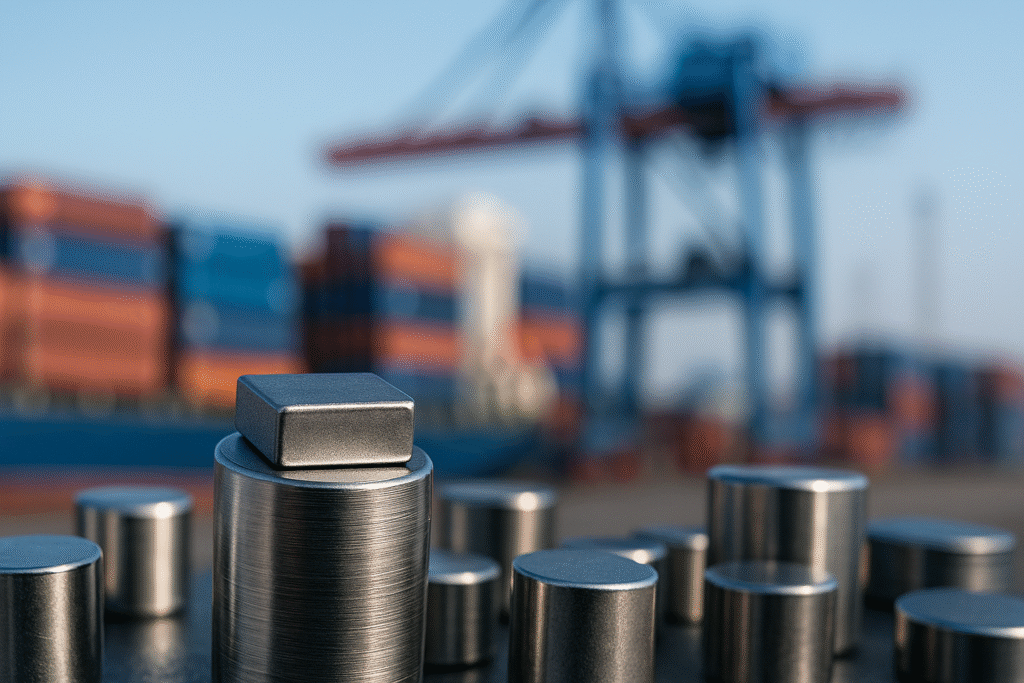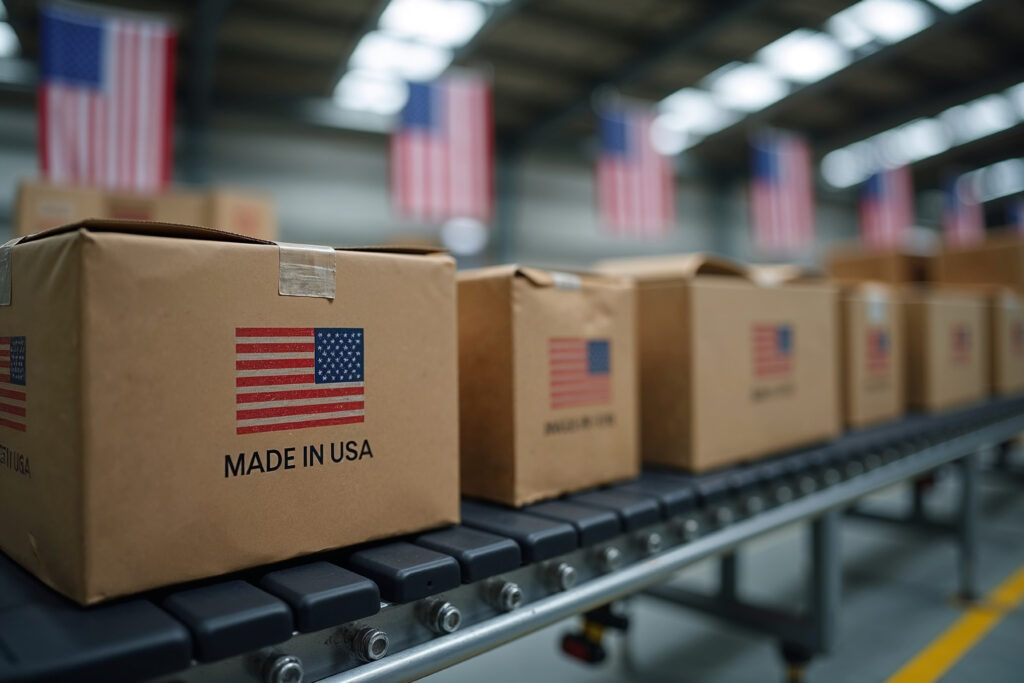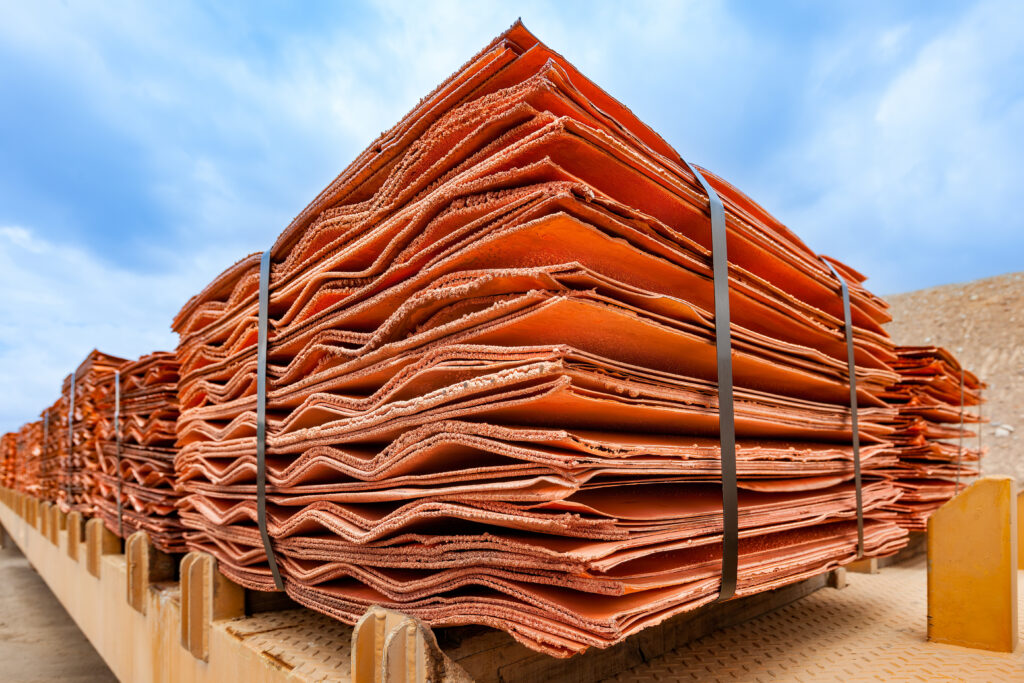Nearshore News: U.S.–China Trade Truce Resurfaces, Rare Earths Resume, and Global Tariff Rules Face a Rethink

As the latest round of U.S.–China trade talks wraps in London, signs of progress are emerging, but the road ahead is still shaped by politics and legal uncertainty. President Trump confirmed that rare earth exports from China will resume immediately, Chinese students will be allowed back into U.S. universities, and a reworked trade truce is on the table. Meanwhile, the World Bank is calling on U.S. trade partners to lower their tariffs—effectively backing Trump’s long-running complaint. And despite ongoing legal challenges, a federal court has allowed the administration’s contested tariffs to remain in place for now, preserving U.S. leverage as negotiations continue.
Nearshore News Summary:
- The latest round of U.S.-China trade talks concluded in London on Tuesday, with U.S. officials citing progress. The next phase depends on presidential approval from both Trump and Xi. (NYT)
- President Trump confirmed that China will immediately resume rare earth and magnet exports “up front,” that Chinese students will be allowed back into the U.S., and that total U.S. tariffs will remain at 55%, while China’s tariffs hold at 10%. (WSJ)
- The World Bank effectively endorsed President Donald Trump’s complaint about the high tariffs that other nations impose on American products, calling for U.S. trading partners to sharply reduce their import taxes (Washington Post)
- A U.S. federal appeals court has granted the Trump administration permission to keep its contested tariffs in place while legal challenges proceed. The ruling preserves leverage for ongoing trade talks (NYT)
What’s Next as the Latest U.S.-China Trade Talks Conclude
Published: June 11, 2025
Source: NYT
The latest round of U.S.-China trade talks concluded in London on Tuesday, with U.S. officials citing progress — particularly around China’s rare earth export controls and the potential rollback of some U.S. tariffs. While negotiators described the summit as a step forward, the full details remain undisclosed and skepticism lingers. The next phase depends on presidential approval from both Trump and Xi.
Key points:
- U.S. Negotiators Say Progress Was Made: Commerce Secretary Howard Lutnick reported movement on rare earth exports from China and hinted at a potential partial rollback of U.S. tariffs.
- Export Controls May Be Easing: A major Chinese magnet producer received approval to resume some exports to the U.S., suggesting early signs of follow-through.
- Presidential Approval Is the Next Step: The proposals from London still require sign-off from Presidents Trump and Xi before any deal can be implemented.
- Lingering Doubts After Previous Setbacks: Similar optimism followed last month’s Switzerland talks, but progress unraveled quickly due to mutual accusations of noncompliance.
- Broader Risks Persist: Global inflation fears, economic slowdowns, and strained markets continue — with the Fed now expected to cut interest rates only once this year and legal challenges to U.S. tariffs still underway.
Trump Says Deal Restoring China Trade Truce Is Done
Published: June 11, 2025
Source: WSJ
President Trump announced that the U.S. and China have reached a deal to revive their trade truce, pending final approval from both him and President Xi Jinping. The framework restores the terms set in last month’s Geneva deal, including reduced tariffs and resumed Chinese exports of rare earth minerals and magnets. Trump also said Chinese students would again be allowed to study in the U.S., and emphasized that the U.S. will maintain a total 55% tariff rate.
Key points:
- Rare Earths Supply to Resume Immediately: Trump said China will provide “full magnets and any necessary rare earths up front.” Chinese exporters have already started receiving approvals, showing implementation is underway.
- Tariff Math: 55% vs. 10%: Trump clarified that the U.S. will retain a total 55% tariff burden (combining old and new rounds), while China holds at 10%.
- Chinese Students Allowed Back: Trump confirmed that Chinese students will be allowed to attend U.S. universities again — a notable softening after months of threatened visa restrictions.
- Framework Revives the Geneva Agreement: The London negotiations largely restored the terms of the earlier Geneva deal, focusing on easing tensions rather than introducing new provisions. Implementation still depends on presidential signoff.
- Trust Gaps Remain: Despite the handshake agreement, many details were left undisclosed. Analysts caution that both sides remain wary and are keeping tools like export controls and tech restrictions in play as leverage.
World Bank backs Trump’s gripe over other nations’ higher tariffs on U.S. goods
Published: June 11, 2025
Source: Washington Post
The World Bank effectively endorsed President Donald Trump’s complaint about the high tariffs that other nations impose on American products, calling for U.S. trading partners to sharply reduce their import taxes. While Trump's tariff war is dragging on U.S. and global growth, the Bank suggests revising outdated trade rules and emphasizes that lowering global trade barriers could help prevent a sharper economic slowdown.
Key points:
- World Bank Backs Trump's Tariff Complaint: The World Bank agrees with Trump's claim that U.S. goods face higher tariffs abroad and calls for a broad global reduction in trade barriers.
- Trade War Hurting Growth: The Bank downgraded its global growth forecast to 2.3% for 2025, with U.S. growth projected at just 1.4% — the weakest since the financial crisis, excluding the pandemic.
- Escalating Tariffs Could Worsen Outlook: If trade tensions escalate, global growth could drop to a sluggish 1.8%, the Bank warned, highlighting the fragility of the current economic environment.
- Support for “Reciprocal” Tariff Model: Chief economist Indermit Gill echoed Trump’s approach, suggesting outdated trade rules be updated to create more balanced, reciprocal trade relationships.
- Supply Chains Adapting Despite Headwinds: While trade volumes are slowing, the World Bank noted that global supply chains are adjusting, not collapsing, and highlighted India, Poland, and Argentina as economic bright spots.
U.S. Court Agrees to Keep Trump Tariffs Intact as Appeal Gets Underway
Published: June 10, 2025
Source: NYT
A U.S. federal appeals court has granted the Trump administration permission to keep its contested tariffs in place while legal challenges proceed, delivering a temporary but significant win. The case centers on Trump’s use of emergency powers to impose sweeping tariffs, a legal interpretation now under close judicial scrutiny.
Key points:
- Tariffs Stay (For Now): The appeals court allowed Trump’s tariffs — including on China, Canada, and Mexico — to remain in effect while the case is under review.
- Legal Basis in Question: The lawsuit challenges Trump’s use of the 1977 International Emergency Economic Powers Act (IEEPA) to impose tariffs, arguing the law does not authorize such actions.
- Trade Talks at Stake: The ruling preserves leverage for ongoing trade talks, including the newly announced U.S.-China framework deal.
- Next Steps: The court will now review whether Trump’s interpretation of IEEPA holds up — a case that may ultimately reach the Supreme Court.
- Business Backlash: Small businesses and states suing the administration argue the tariffs are causing economic harm and violate constitutional limits on presidential power.
More blogs


